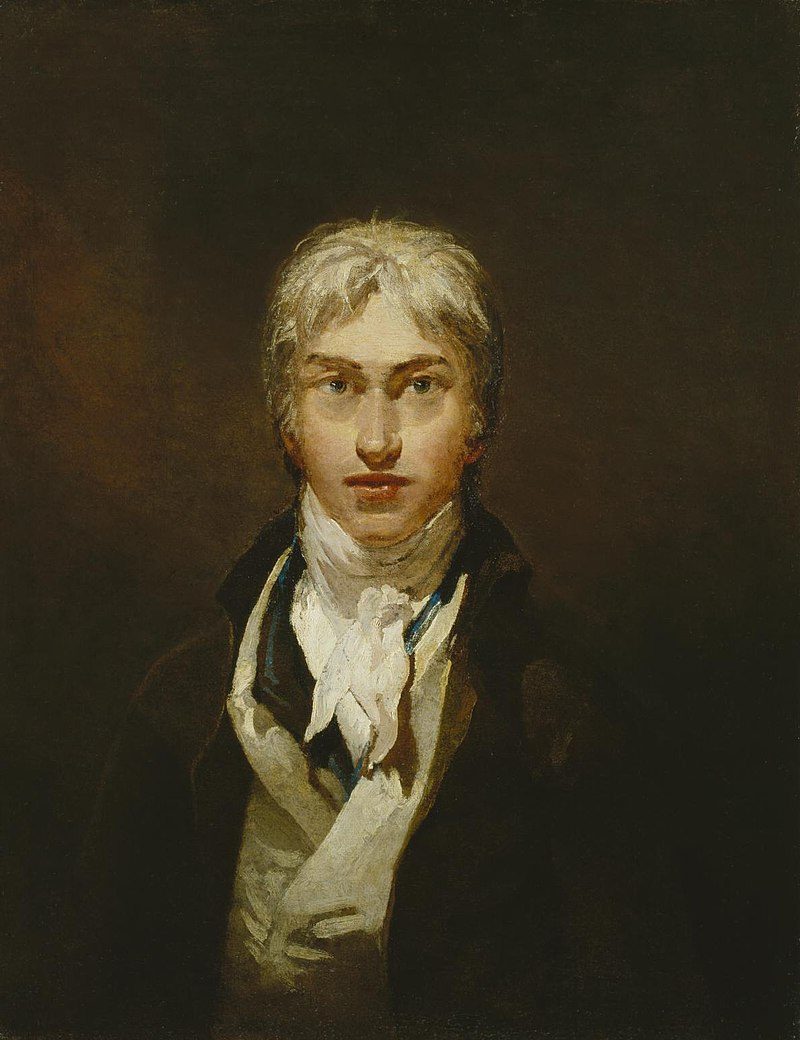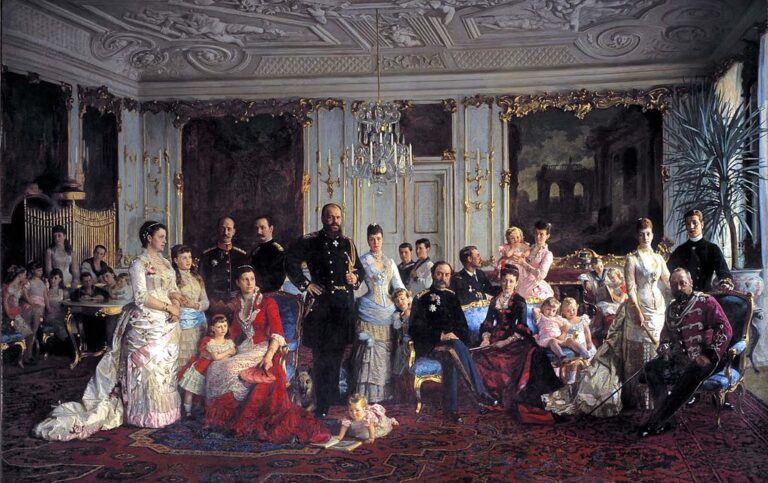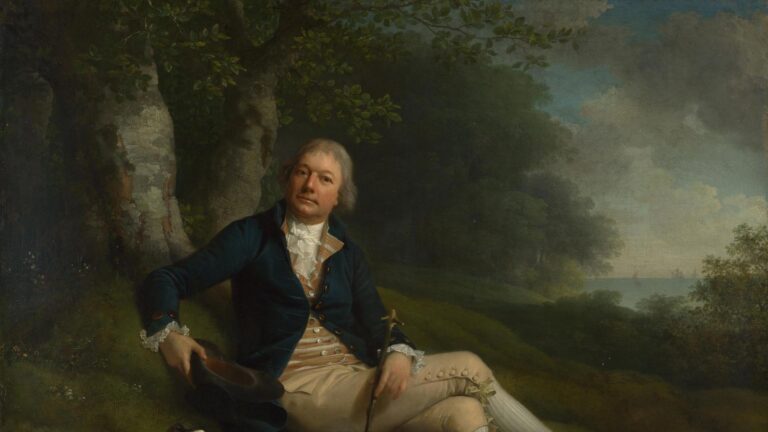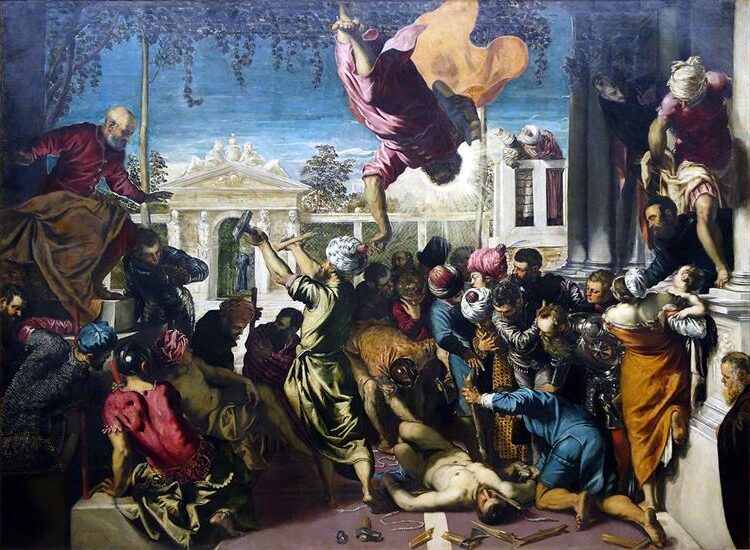Turner Painter: The Visionary Artist of Romantic Landscapes
Born: 23 April 1775, London, England
Death: 19 December 1851, London, England
Art Movement: Romanticism
Nationality: British
Teachers: Thomas Malton and Sir Joshua Reynolds
Institution: Royal Academy of Arts
Turner Painter: The Visionary Artist of Romantic Landscapes
Life and Career of Joseph Mallord William Turner
Joseph Mallord William Turner (1775-1851) was one of Britain’s most celebrated painters. His artistic journey spanned decades. During this time, he developed a distinctive style characterized by expressive use of light and color.
Early Life
Turner was born in London on April 23, 1775, to a barber father and a mother who suffered from mental illness. His artistic talent emerged at a remarkably young age.

The Field of Waterloo (1818) by J.M.W. Turner
By age 10, Turner was selling drawings displayed in his father’s shop window. This early success led to his formal training at the Royal Academy of Arts. He began studying at just 14 years old.
Turner’s childhood experiences along the Thames River significantly influenced his later fascination with maritime subjects. His mother’s deteriorating mental health and eventual institutionalization also had a profound impact on his emotional development.
Artistic Development and Style
Turner quickly established himself as a master of watercolor painting. His early works followed traditional styles, focusing on architectural studies and topographical landscapes.
As his career progressed, Turner’s style evolved dramatically. He became increasingly experimental, moving toward more expressive and atmospheric paintings that captured emotional qualities of nature rather than exact representations.
Light became Turner’s primary subject. His innovative technique of building layers of luminous color created an almost ethereal quality in his works. Critics both praised and attacked his bold approach.
By the 1830s, Turner had developed a style that verged on abstraction, with swirling masses of color and light that anticipated Impressionism by decades.
Major Works and Exhibitions
Turner’s prolific career produced over 550 oil paintings, 2,000 watercolors, and 30,000 paper works. His most celebrated paintings include:

The Fighting Temeraire (1839) by J.M.W. Turner
- The Fighting Temeraire (1839)
- Rain, Steam and Speed (1844)
- Slave Ship (1840)
- Snow Storm: Steam-Boat off a Harbour’s Mouth (1842)
Turner exhibited regularly at the Royal Academy, often working until the last minute on paintings directly in the exhibition space. His works increasingly focused on atmospheric effects of storms, fires, and natural disasters.
He traveled extensively throughout Britain and Europe, filling sketchbooks that informed his studio paintings. Venice became a particular source of inspiration, appearing in numerous masterpieces.
Later Years and Legacy
In his final decades, Turner became increasingly eccentric and reclusive. He continued to paint with remarkable energy, producing some of his most radical works when he was in his sixties and seventies.
Turner died on December 19, 1851, in Chelsea, London. He left behind over 300 paintings and nearly 20,000 sketches to the British nation, forming the Turner Bequest at the National Gallery and later Tate Britain.
His influence extends far beyond his lifetime. Turner revolutionized landscape painting and laid groundwork for Impressionism and even Abstract Expressionism. Art historian Kenneth Clark called him “the father of modern art.”
His innovative techniques and emotional approach to landscape painting permanently changed how artists depicted the natural world.
Themes and Techniques in Turner’s Paintings

Clare Hall and King’s College Chapel, Cambridge, from the Banks of the River Cam (1793)
J.M.W. Turner revolutionized painting through his mastery of light, innovative approaches to landscape, and dramatic maritime scenes. His technical experimentation and emotional approach to subject matter helped bridge Romanticism with later movements like Impressionism.
Use of Light and Color
Turner’s approach to light and color was revolutionary. He mastered traditional watercolor techniques but pushed their boundaries, often using the paper’s color as a light source within his works.
His palette evolved throughout his career, moving from earthy tones to increasingly luminous, almost atmospheric color applications. Many later paintings feature brilliant yellows, reds, and blues that seem to glow from within.
Turner applied paint using unconventional methods, including palette knives, which created textural effects that enhanced the perception of light. He would also scrape, scratch, and wipe paint to achieve desired luminosity.
His understanding of how light interacts with atmosphere allowed him to create works where objects seem to dissolve into pure color and light, pointing toward abstraction long before it became an established movement.
Landscape and Atmosphere Depictions
Turner transformed landscape painting by focusing on mood and atmospheric conditions rather than mere topographical accuracy. His landscapes capture fleeting weather conditions—mist, rain, snow, and sunshine—with remarkable sensitivity.

Modern Rome – Campo Vaccino (1839) by J.M.W. Turner
He often painted outdoors to observe nature directly, making quick sketches that captured essential qualities of light and atmosphere. These studies informed his larger studio works.
Turner’s landscape technique involved building layers of thin, translucent paint to create depth and luminosity. This approach was particularly effective in conveying the hazy quality of distance and atmosphere.
His revisiting technique was significant—Turner would return to paintings even after they dried, adding fresh paint to enhance certain effects or respond to how the work had evolved.
Innovations in Maritime Subjects
Turner’s maritime paintings revolutionized how the sea was depicted in art. He spent considerable time observing the ocean in different conditions, developing an intimate understanding of water’s movement and light reflections.
He frequently portrayed ships battling violent seas, using dynamic compositions and dramatic contrasts to convey nature’s power. These works balanced technical accuracy with emotional impact.
Turner’s technique for rendering water involved complex layering of transparent and opaque paint. He would often use his fingers, rags, or palette knives alongside brushes to achieve the right texture and movement.
His maritime paintings frequently feature human elements—tiny ships or figures—that emphasize nature’s overwhelming scale and force, creating a sense of the sublime that defined Romantic art.
Impact on Art and Influence on Future Generations
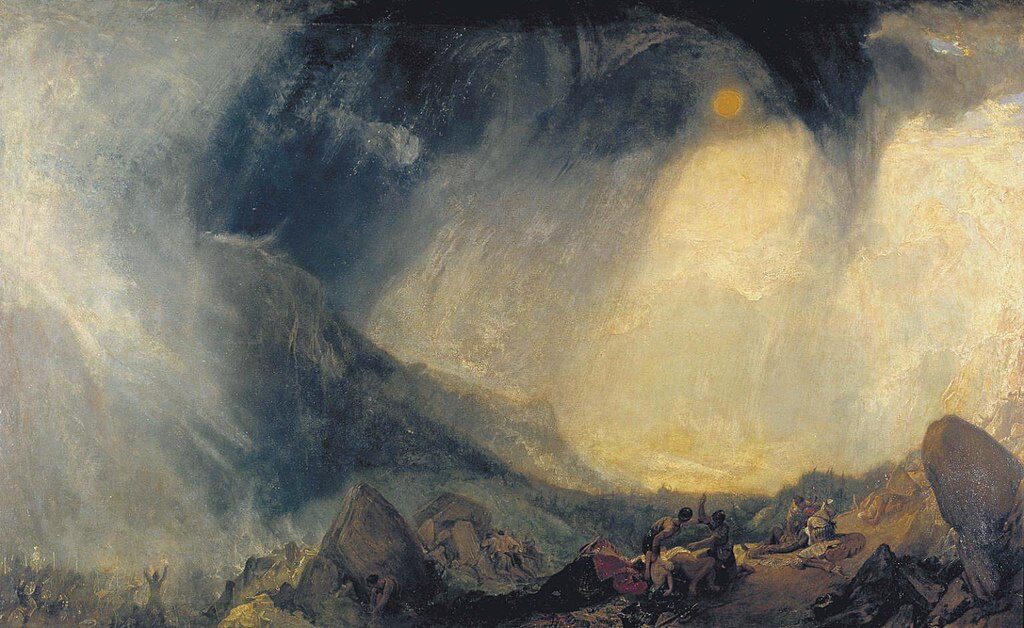
Snow Storm: Hannibal and his Army Crossing the Alps (1812)
Turner’s revolutionary approach to light, color, and atmosphere transformed the art world and continues to resonate today. His innovative techniques broke boundaries and opened new possibilities for artists who followed in his footsteps.
Inspiration for Impressionism
Turner’s experimental use of light and color laid crucial groundwork for the Impressionist movement. His later works, with their atmospheric qualities and emphasis on color over form, directly influenced painters like Claude Monet and Camille Pissarro.
Artists were particularly drawn to Turner’s ability to capture fleeting moments of light and weather conditions. His paintings often blurred the lines between objects and atmosphere, creating a visual poetry that encouraged later artists to move beyond strict representation.
The haziness and emotional quality in Turner’s work challenged conventional approaches to painting. These qualities inspired future generations to explore how light itself could become the main subject of a painting rather than merely illuminating objects.
Contribution to Romanticism
Turner stands as a defining figure in Romantic painting. His dramatic landscapes captured the powerful, sometimes frightening aspects of nature that epitomized Romantic sensibilities.

Fisherman’s Cottage, Dover (1790) by J.M.W. Turner
His work embodied key Romantic principles: emotional intensity, awe of nature, and sublime beauty. Turner’s seascapes, with their threatening storms and shipwrecks, conveyed human vulnerability against nature’s overwhelming power.
Unlike many contemporaries, Turner’s landscapes weren’t just backgrounds for historical scenes. They became emotional expressions in themselves, elevating landscape painting to new importance.
Though some contemporaries struggled to understand his more abstract later works, these paintings have proven most influential. His willingness to prioritize emotional truth over literal representation helped expand what was possible in art and secured his enduring legacy.
Frequently Asked Questions
J.M.W. Turner’s life and art continue to fascinate art enthusiasts worldwide. These common questions address his personal life, artistic legacy, and where his works can be found today.
What is the cause of J.M.W. Turner’s death?
J.M.W. Turner died on December 19, 1851, at the age of 76. The official cause of his death was cholera, a bacterial infection that was common during that era.
Turner had been suffering from declining health in his final years. He spent his last days at the home of his companion Sophia Booth in Chelsea, London, where he passed away.
Was J.M.W. Turner ever married?
Turner never formally married, though he did have significant relationships. His longest relationship was with Sarah Danby, which lasted many years.
Later in life, he lived with Sophia Caroline Booth, his landlady in Chelsea, after the death of her husband. This relationship continued until Turner’s death.
Did J.M.W. Turner have any offspring?
Turner is believed to have fathered two daughters with Sarah Danby. Their names were Evelina and Georgiana.
However, Turner never officially acknowledged these children as his own. Records about his family life remain somewhat limited and subject to historical debate.
Where can one purchase J.M.W. Turner’s artwork?
Original Turner paintings are extremely valuable and rarely available for purchase. When they do appear, they’re typically sold through major auction houses like Christie’s or Sotheby’s.
High-quality reproductions and prints of Turner’s work can be purchased from museums like the Tate Britain, which houses the Turner Bequest collection. Many online art retailers also offer licensed reproductions.
Does a photograph of J.M.W. Turner exist?
No verified photograph of Turner exists. He lived during the early days of photography, but no confirmed photographic portrait of him has been discovered.
What we know of Turner’s appearance comes from paintings and sketches made by his contemporaries. The most famous portrait of Turner was painted by John Gilbert in 1837.
Who were the artists influenced by J.M.W. Turner’s work?
The Impressionists were heavily influenced by Turner’s innovative use of light and color. Claude Monet particularly admired Turner’s atmospheric effects and vibrant skies.
American landscape painters of the Hudson River School, including Frederic Church and Thomas Moran, drew inspiration from Turner’s dramatic landscapes and sublime natural scenes.
Modern abstract expressionists like Mark Rothko have cited Turner’s later, more abstract works as influential to their artistic development. Turner’s experimental approach to painting continued to resonate with artists throughout the 20th century.


